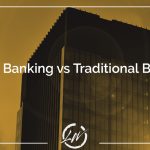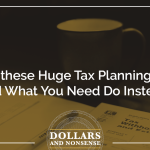When planning for retirement, it can become easy to obfuscate the future. Maybe you are 30 years from retirement age – are trying to make the right decisions today to set yourself up financially for your Golden Years might seem like an impossible task. Or on the other hand, maybe you are 3 months away from retirement and want to be confident that what you’ve built will last. You might ask – how are the two situations at all similar? Well, they both come down to analyzing your priorities when retirement comes. To accurately do so, you’ll also need a proper sense of what it takes to make those priorities come to fruition. Most of it comes down to 3 major elements: income, liquidity, and legacy – things that some don’t consider when retirement planning. Let’s break down what each of these means for you.
1. Income

Income isn’t a word that is really thrown around when discussing retirement. Instead, the “Nest Egg” mentality is more common in retirement planning culture. However, it is important to remember that the goal of retirement is not to see who has the most money piled up, but who can generate the most income from the assets they’ve accumulated.
Cash Flow is always king –, you know that you have a good month when your income is greater than your expenses regardless of how much money you have in the bank. The same thing applies in retirement. Most individuals are trusting their retirement assets in mutual funds and the stock market; unfortunately, these assets are focused more on appreciation than they are on cash flow, and one bad year near retirement can wipe you out (remember 2008… not a good year for those wanting to retire).
If your plan is solely based on “Nest Egg”, it might be time to look into ways to generate an income to live off of in retirement.
2. Liquidity
Retiring off of a pension, Social Security, rental income, or income from an annuity is great, but if you do not have a reserve fund set aside for emergencies, you can be in for a rude awakening. Once you’ve figured out how you will generate the income you need in retirement, now it’s time to focus on your liquidity.
There will always be expenses that are unforeseeable and that don’t quite fit in your monthly budget. In retirement, these unexpected expenses can come from many places: a medical emergency, long term care expenses, or even the usual culprits like buying a car or going on a vacation to see the grandkids.
You want to make sure that you have funds set aside that are not correlated to your income stream. By setting yourself up in this manner, you can use these funds when an emergency or unexpected expense comes along without having to worry about selling off assets that are producing your monthly income.
3. Legacy
After building your income stream and creating a liquid pool of reserves, your final priority should be on building your legacy. We don’t get to take any of our possessions with us on the other side, so making an estate plan for what we leave behind is crucial.
Some assets are better than others to own when it comes to preparing to leave an inheritance. One of the best assets to own at the time of death is Whole Life Insurance. Many times the Death Benefit will be exponentially larger than what was paid into the policy in premiums, allowing you to pass on a legacy for pennies on the dollar. Another great perk is that the Death Benefit can be passed down Income Tax-Free to your heirs, and if set up properly, can bypass any Estate Taxes as well.
With the many misconceptions on retirement planning that are floating around these days, it’s good to refocus ourselves on the key elements of retirement so that we can make a proper plan. If you are interested in learning Living Wealth’s approach to wealth building and retirement, you can access our Beginner’s Course for free by clicking here.








